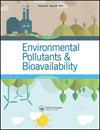包封尿素-高岭石控释肥的制备及其对水稻生产的影响
Q3 Chemical Engineering
引用次数: 21
摘要
摘要将含尿素20 wt%的尿素插层高岭石造粒,包覆水性环氧树脂,制备氮基控释肥料。采用二乙酰一辛肟比色法对不同尿素插层高岭石颗粒和非插层尿素-高岭石混合物样品的氮释放特性进行了紫外可见光谱研究。同时考察了颗粒大小和不同包覆厚度对包覆NCRFs氮素释放的影响。释放实验结果表明,与未插层的样品相比,插层尿素使高岭石的氮释放量降低了3倍。同时,随着颗粒尺寸和涂层厚度的增加,氮素释放率降低。最后,进行了一项温室试验,比较包膜尿素高岭石与未包膜尿素高岭石和常规尿素肥颗粒对水稻(品种mr219)产量的影响。产量和一些产量组成数据(灌浆小穗数、每穗小穗数、有效分蘖数)显示包膜氮肥处理(一次性施用)对产量有极显著的正响应。此外,产量和产量组成部分的汇总数据强调,与其他处理相比,水稻作物对使用CRF氮肥的处理反应显著。包膜氮肥产量最高,为28.73 g/罐,非包膜氮肥产量中等,约为21.74 g/罐,常规尿素产量最低。其他形态和生理性状也表现出与产量相似的趋势。本文章由计算机程序翻译,如有差异,请以英文原文为准。
Preparation of encapsulated urea-kaolinite controlled release fertiliser and their effect on rice productivity
Abstract Urea-intercalated kaolinite containing 20 wt% urea was granulated and coated with water-based epoxy resin to prepare nitrogen-based controlled release fertiliser (NCRF). The nitrogen release property was studied using UV-Vis spectroscopy through the diacetylmonoxim colorimetric method for different samples of granules of urea-intercalated kaolinite and non-intercalated urea–kaolinite mixture. Also the effect of granules size and different coating thickness on nitrogen release from coated NCRFs was investigated. The results of release experiments revealed that intercalation of urea into kaolinite caused a three times decrease in the nitrogen release compared to non-intercalated sample. Also, by increasing the size of granules and thickness of coating, the nitrogen release ratio from NCRFs decreased. Finally, a glasshouse trial was conducted to evaluate the effect of coated urea-kaolinite compared with a non-coated one and conventional urea fertiliser granules on rice productivity (Variety MR 219). The yield together with some yield component data (filled spikelet, spikelet per panicle, productive tiller) revealed a highly significant and positive response to coated CRF N fertiliser treatment (one time application). Also, the pooled data of the yield and yield component emphasised that the rice crop responded significantly to treatments involving CRF nitrogen fertilisers as compared to others. The maximum grain yield of 28.73 g/pot belongs to coated CRF, medium grain yield of around 21.74 g/pot from the non-CRF N fertilisers plots and the lowest yield was obtained where conventional urea was applied. The other morphological and physiological characters show a similar trend to the yield.
求助全文
通过发布文献求助,成功后即可免费获取论文全文。
去求助
来源期刊
CiteScore
1.62
自引率
0.00%
发文量
0
审稿时长
1 months
期刊介绍:
Chemical Speciation & Bioavailability ( CS&B) is a scholarly, peer-reviewed forum for insights on the chemical aspects of occurrence, distribution, transport, transformation, transfer, fate, and effects of substances in the environment and biota, and their impacts on the uptake of the substances by living organisms. Substances of interests include both beneficial and toxic ones, especially nutrients, heavy metals, persistent organic pollutants, and emerging contaminants, such as engineered nanomaterials, as well as pharmaceuticals and personal-care products as pollutants. It is the aim of this Journal to develop an international community of experienced colleagues to promote the research, discussion, review, and spread of information on chemical speciation and bioavailability, which is a topic of interest to researchers in many disciplines, including environmental, chemical, biological, food, medical, toxicology, and health sciences.
Key themes in the scope of the Journal include, but are not limited to, the following “6Ms”:
Methods for speciation analysis and the evaluation of bioavailability, especially the development, validation, and application of novel methods and techniques.
Media that sustain the processes of release, distribution, transformation, and transfer of chemical speciation; of particular interest are emerging contaminants, such as engineered nanomaterials, pharmaceuticals, and personal-care products.
Mobility of substance species in environment and biota, either spatially or temporally.
Matters that influence the chemical speciation and bioavailability, mainly environmentally relevant conditions.
Mechanisms that govern the transport, transformation, transfer, and fate of chemical speciation in the environment, and the biouptake of substances.
Models for the simulation of chemical speciation and bioavailability, and for the prediction of toxicity.
Chemical Speciation & Bioavailability is a fully open access journal. This means all submitted articles will, if accepted, be available for anyone to read, anywhere, at any time. immediately on publication. There are no charges for submission to this journal.

 求助内容:
求助内容: 应助结果提醒方式:
应助结果提醒方式:


